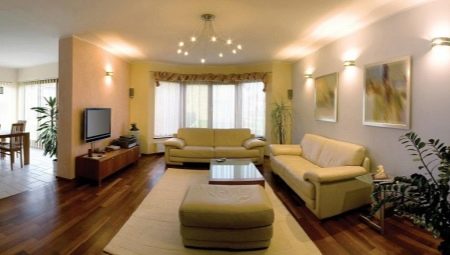Living room - a place in which people spend most of their time, meet guests, arrange holidays. Therefore, lighting this part of the house is very important. Artificial light sources create comfortable conditions, an atmosphere of comfort and warmth, emphasize the advantages of the layout and design of the room.
About how to use the lamps in the design of the living room, the article will tell.
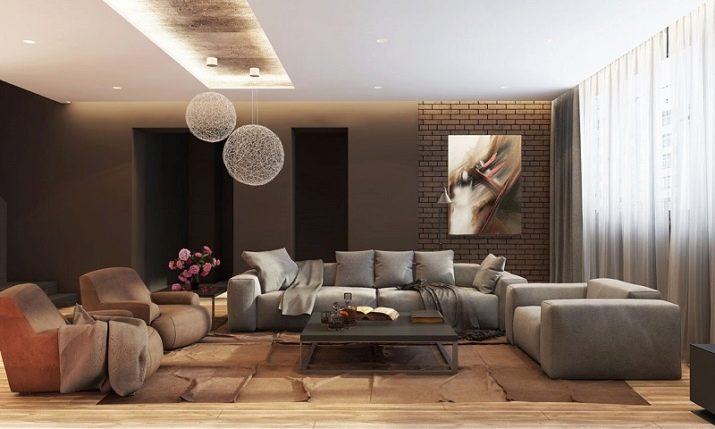
Basic rules for organizing lighting
Modern manufacturers offer various options for lighting. They differ in design, size, installation method and other features. By combining appliances, you can simultaneously illuminate the entire room or use each type separately.
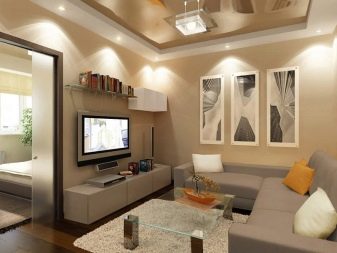
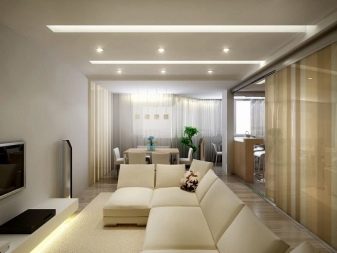
Thinking over the choice of light sources and how they are located in the hall, some basic nuances should be taken into account.
- One chandelier in the center of the ceiling will be enough only if the room is small. In a spacious room additional lighting sources are needed. Otherwise, dark corners may form.
- Too many different lights in a small space is another undesirable extreme. More than 4 types of devices in one room are not recommended.
- Do not hang a sconce next to the TV. You can install a soft glow source behind the case, but open bright lamps near the screen are undesirable.
- Remember that cold lighting is only suitable for austere interiors. If you want to make the room cozy, it is better to choose light bulbs with soft warm light.
- If you decide to make a multi-level ceiling, do not miss the opportunity to use spotlights as additional.
- When choosing light sources, consider their design. Devices should harmoniously fit into the interior. Also, if you choose different types of devices (for example, a chandelier, sconce and floor lamp), it is important that they are made in the same style.
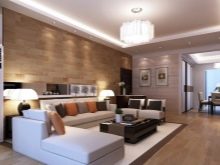
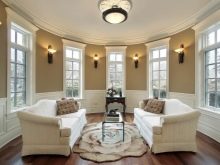
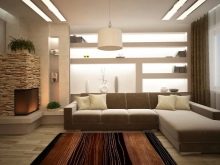
Kinds
Conventionally, all artificial light sources can be divided into 3 groups. The main one is responsible for the illumination of the entire space. Local complements the main unit and illuminates individual areas. Decorative accents.
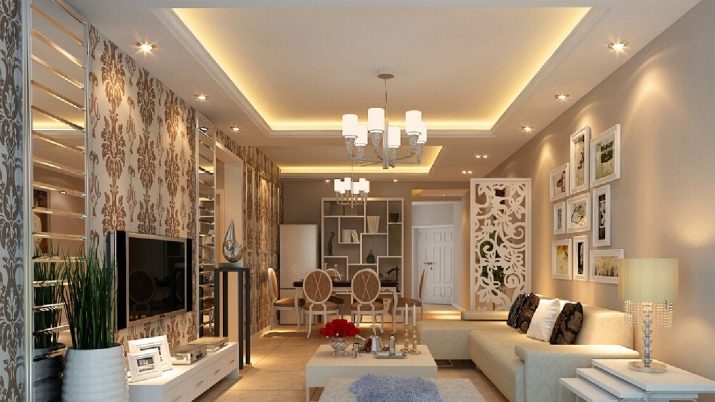
Consider each type in more detail.
Main
The overall illumination of a large room is achieved by combining several light sources. As a rule, they use luxurious chandeliers or overhead flat lamps, as well as spotlights. Sometimes it is appropriate to add an LED strip to the interior.
If you do not need to select separate zones, you can do only with the main lighting. It is enough to illuminate all areas of the room and create a comfortable environment.
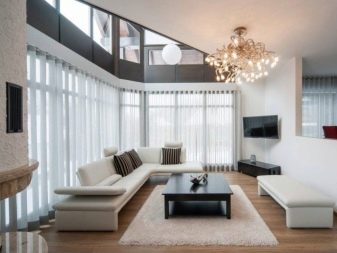
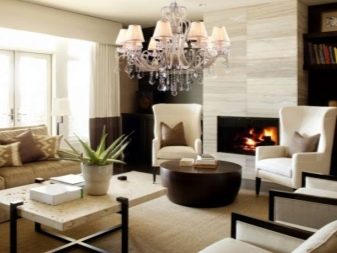
Additional
If you need to highlight some specific places with light, you can combine the first type of devices with the second - additional. For example, a desk lamp can be used to illuminate a desktop. You can put a floor lamp next to armchairs and a coffee table. The ability to turn on intimate light can be created by installing wall sconces.
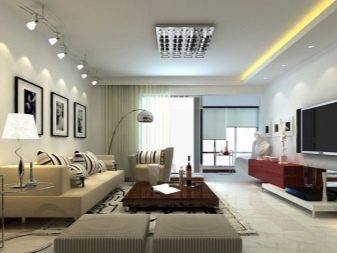
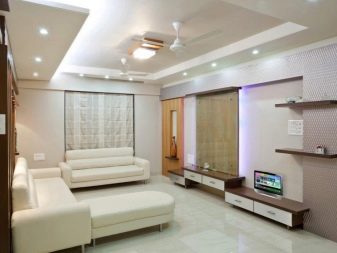
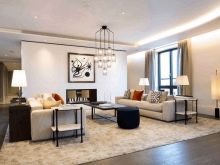
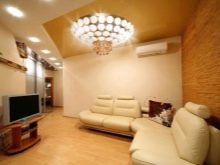
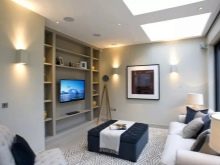
This method will allow you to include both all the devices together, or separately (as necessary). The room will become more comfortable. You will be able to adjust the intensity of the general light, as well as the level of illumination of individual corners of the living room.
If you don’t like any of these options, you can also use spot models as special lighting devices, although they are usually included in the main group. In addition to the fact that they can be switched on separately from the main chandelier, creating dim light, there is always the possibility of their concentration in a certain area.
If you choose rotary products, then you can also direct light fluxes in the right direction.
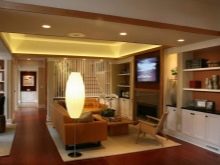
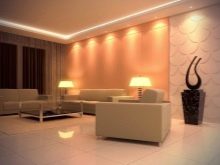
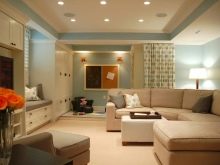
Decorative
Decorative lighting makes the space interesting and multifaceted. With its help, you can effectively highlight the nuances of the layout (for example, a niche or a podium). You can focus on paintings or decor. You can highlight the aquarium, TV or something else. For this, LED strips, point devices are usually used. Sometimes neon lamps are also used.

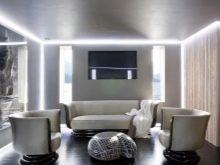
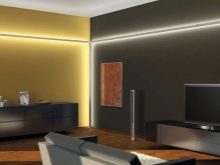
Types of fixtures
Chandeliers
Many people prefer to see a chandelier as the main element of a light composition. This is a traditional device, although the design options are so diverse that they allow you to find a model for any interior.
There are 2 types of chandeliers.
- Outboard. Such models are suspended from the ceiling using hooks, cords or chains. They look very impressive, but this option is not suitable for a small living room.
- Overhead. Such models are more compact. They are located near the ceiling, do not hang down and are great even for rooms with low ceilings.
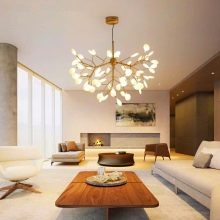
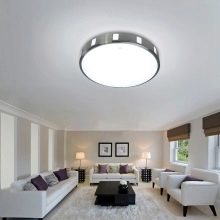
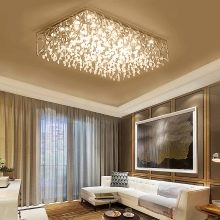
Spots
These are models designed to direct light to a specific area. They vary in type, design and method of attachment. It can be a single lamp or a group of identical devices that are part of the general lighting equipment. The spots are wall and ceiling. They can also be embedded and overhead.
In addition, there are static devices and models with a rotary mechanism that allows you to change the angle of illumination.

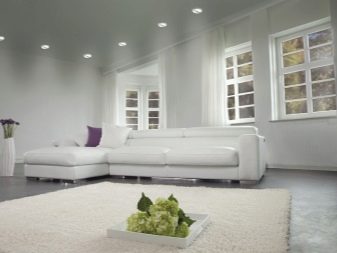
Recessed (mortise) spots are miniature. They are installed in a suspended or suspended ceiling and are called point. As an independent, this type of lighting is suitable for small rooms.In large halls, a group of spots installed along the perimeter with equal pitch can be an additional light source.
Also, with the help of such devices, individual zones can be highlighted.

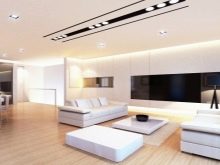
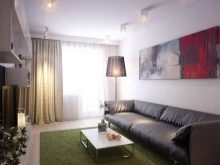
Overhead spots are screwed to the base. There are also combined models resembling a chandelier. Several light bulbs in the lampshades based on can be adjusted at the request of the user. In modern interiors, there are often spots on the bar. The ability to turn the lamps allows you to favorably illuminate any objects, emphasize details, and accents.
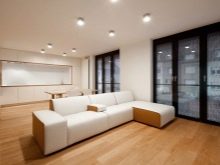
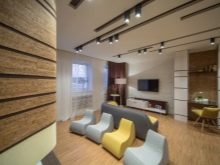
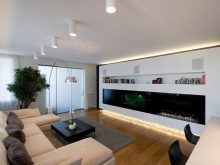
Sconces
Small luminaires mounted on a wall are usually located in a relaxation area. The number of sconces depends on the size of the living room and design features. For example, in classic interiors, such appliances are often installed in pairs. If the height of the room is small, it is better to choose models that allow you to direct the light up. The brightness of the lamps is selected taking into account the installation location. For example, if sconces are mounted above the sofa, the lighting should be soft, of medium intensity.
Brighter light may be appropriate in places dividing the space into zones.
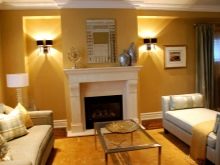

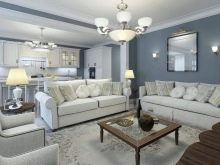
Tabletop
If the room is divided into several zones, it may be appropriate to use table lamps. Such a lighting device can add coziness, become a spectacular design touch, and increase the comfort of hanging out in the living room. The main thing is to choose the right appearance of the lamp.
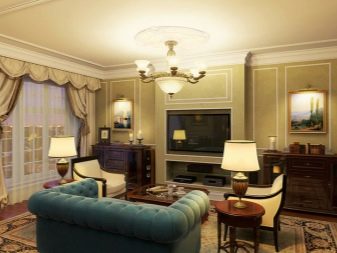
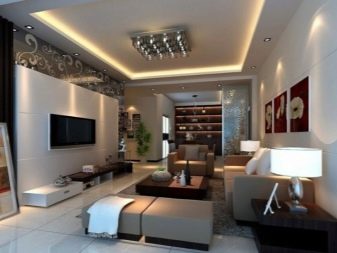
Floor lamps
Such an element can perfectly fit into the light composition. Floor lamps are convenient, mobile. Thanks to the lampshade, the light gently scatters around without tiring your eyes. However, given the fact that the device takes up space on the floor, it is better not to put it in a small room. The design options for modern floor lamps are diverse.
If the area allows, you can easily decorate the environment with a device that is suitable specifically for your interior.
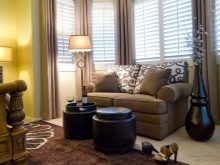

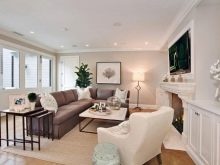
LED Strip Light
This is a unique flexible device that can take any form. Using this tape, you can highlight the ceiling, walls and even the floor. Bright light can create spectacular geometric shapes, and dim light can imitate blurred borders and airiness of a room.
You can highlight niches, shelves with decor, art objects, etc.
Sure, so that the result is impressive, it is better to entrust the matter to a professional designer.

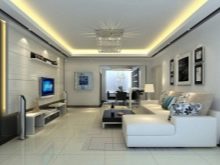

Lighting Styles
All artificial light sources must be appropriate to the design of the room. Otherwise, even the most beautiful appliances will look inappropriate.
- The classics are characterized by chandeliers, sconces, floor lamps and desktop appliances in a vintage style. Often used gilded models that simulate candlesticks. Light bulbs of the corresponding form are selected for them. Neoclassical interiors are often decorated with crystal lights or elegant glassware. Two-level construction of ceilings, the location of spotlights around the perimeter are permissible here.
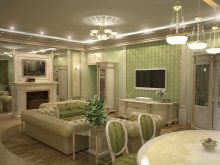
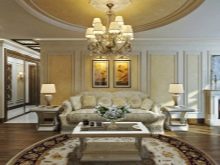
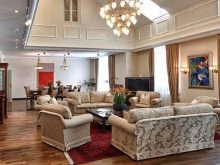
- Forged Provence-style interior, wrought iron lamps and chandeliers with floral design are ideal. Appearance of devices here is similar to classic models, but in this case pomposity and luxury are rejected. Lightness and simplicity are welcome. The lamps with floral lampshades with floral print will fit in well in such a living room.
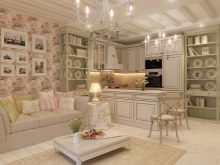

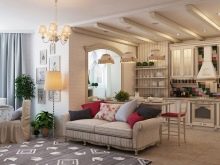
- Minimalism and hi-tech suggest rigor and clarity of form. The main lighting here is usually provided using spotlights, but here you can also find chandeliers. Unlike the options described above, modern models have a more concise, often futuristic design. For example, it could be a ball or a flat ceiling structure. The materials used are metal, plastic, sometimes glass. Sconces can take the form of metal plates. Minimalist floor lamps are a light bulb in a chromed body on a curved support.Often, devices hanging on long cords are chosen to highlight individual zones. Actively used LED strip.
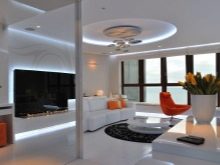

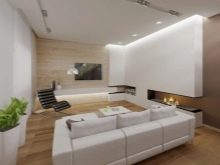
- Loft - a rude style in which only metal appliances find their placemade in industrial-urban design. These are spots, spot models, pendant chrome lights and even ordinary bulbs hanging from the ceiling with cords.
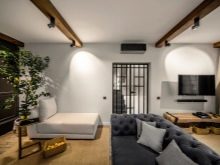
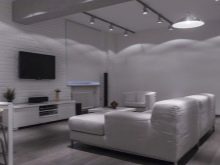

- Modern is a free style in which everything is possible. Multilevel combinations, glass cascades, white and yellow metal, fabric models - you can choose any device options. The main thing is to choose all the devices in the same design.
It is also worth considering the area of the room, the nuances of the arrangement of furniture and its design, the color scheme of the room.
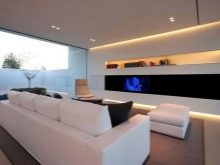
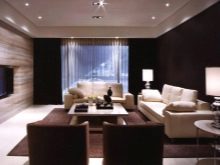
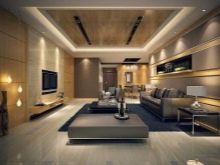
Fancy Lighting Ideas
To achieve a magical play of light and emphasize the creativity of the design, just show a little imagination. If you have shelves equipped in niches, install spotlights in them. If you want to impress your guests with an unusual TV zone, set a soft backlight behind the TV or around it. Curly drywall construction can be highlighted with a special tape. The same tape can create the illusion of sparks of lightning or the rays of a spotlight on the ceiling.
Using colored lighting, you can create a fantastic atmosphere in the room. The main thing is not to overdo it with color. Especially impressive are the highlights in turquoise, pink, and violet colors that look in concise black and white interiors. If the atmosphere is full of rich shades, it is better to focus on the standard color of the lamps. In any case, even the competent use of spot systems or a combination of several types of fixtures can make the living room interesting.
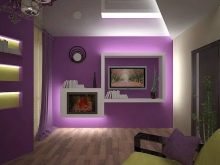
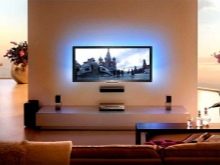
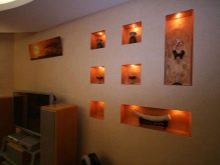
Light zoning
As a rule, the living room is the largest room in the house. Therefore, it can be divided into several conventional parts. This can be achieved not only by arranging furniture, but also by a certain placement of lighting devices. The issue of zoning is also relevant in cases where the apartment has only one room. Living room-studio necessarily involves the allocation of certain functional areas. In some cases, a person entering the house immediately enters the room, so the living room / entrance hall also needs some design tricks.
In the latter case, it is worth highlighting the entrance to the room more clearly. In the rest you can highlight the dining area, a place to relax, a work area. Above the table should be placed ceiling lights of medium brightness. The light should not hurt your eyes, but the table should be clearly visible. Near the sofa you can organize a wall lighting solution using sconces.
If you like to read, a floor lamp may come in handy.
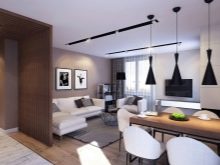
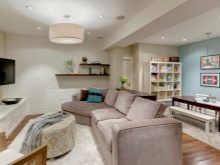
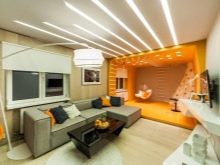
How to choose?
When choosing lighting products, several points should be considered.
- Room size. In a spacious living room (more than 18 sq. M), it is necessary to organize a complete lighting system from several types of devices. One chandelier will not be enough. If the room is small, it is not worth overloading it with different volumetric lamps. In this case, it is better to give preference to compact ceiling models (especially if the apartment has a low ceiling). Additional illumination can be arranged by built-in point devices or LED strip.
- Interior style. Obviously, in a luxurious classical hall with columns and a room in the style of Provence with wooden beams, the lamps should be different.
- Design nuances. When choosing a chandelier, make sure that the ceiling lights are not too closed and do not look down. Light should be evenly scattered around the room, and not directed to the center of the floor. When buying spots, consider whether the ability to change the direction of the light is important to you.
- Lamp color. When using different types of devices in a room, it is better to choose the same light for everyone (warm or cold).
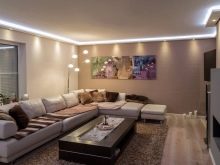
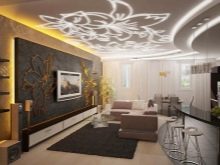

Where to place the light sources?
The chandelier is usually located in the center of the room, however this is not a strict rule. The main lamp can be placed above the dining table or other area in which light is most important. As for other devices, their location depends on the areas that they should illuminate (this was mentioned earlier).
It is also important to consider the location of the switches. It is advisable that each type of light source works autonomously.
If the room is very large, you can make 2 or 3 switches for one device. This will allow you to control lighting from anywhere in space. Usually, switches are installed at the entrance to the room, as well as in the recreation area.
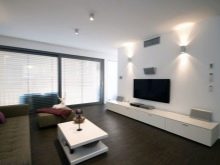
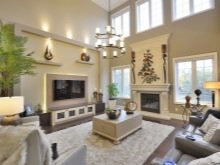
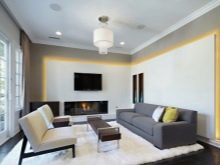
Multi-level lighting
Thinking over the lighting system in a large hall, it is better to draw up a project in which all the nuances will be taken into account. The basis of multi-level light can be a two- or three-tier ceiling. The main light source will be located in the central part, and additional point devices will be located on the second level. The third level can be wall sconces, table lamps, floor lamps, lighting niches.
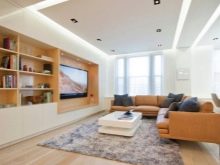
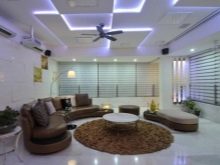
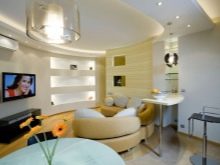
Beautiful ideas
- The vintage chandelier and sconces, made in the same style, are complemented by a table lamp. The traditional classic version.

- And here is a more modern, but no less sophisticated interior. Here a glass chandelier is combined with the same floor lamp and spotlights.

- Illuminated niches look great. The feeling of special value of the decor items decorating the shelves is created.

- Highlight gypsum panel - a spectacular design technique. The interior immediately acquires a twist and a unique charm.

- Illumination of the TV zone is a great solution. In a similar way it turns out to “revive” a minimalistic strict interior.

You can find out how to organize LED lighting with your own hands by watching the video a little lower.
